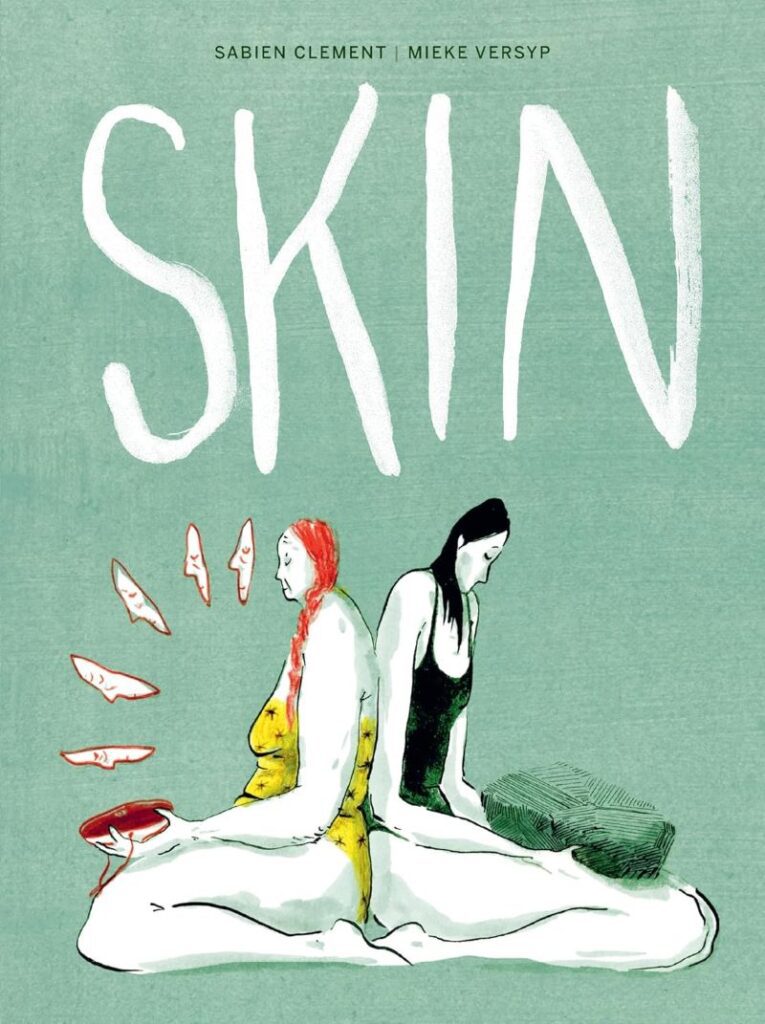
Casting about for purpose in the aftermath of becoming an empty nester, Rita impulsively signs up to be a nude model for an art class. This brings her into contact with Esther, a young artist and fellow lonely heart who is struggling with her inability to find a meaningful romantic relationship. Although they are at different stages of life, they soon bond over their shared feelings of rejection and loneliness, finding solace in their friendship.
Buy Skin hardcoverSkin is the debut graphic novel by writer Mieke Versyp and artist Sabien Clement, and they put their outsider status to great use to craft this wildly unconventional book. Although the plot follows a linear chronological path, this stunning work is more focused on expressionism and feelings than structured physical representations of the story. Clement’s dreamy watercolors swirl underneath Versyp’s lyrical text, rejecting the restrictions of panel lines and word bubbles to create something barely recognizable as a comic, but wholly identifiable as a work of art.
Versyp’s insightful writing drills down to the core of both characters, exposing their hopes and fears as they try to find their way forward. Esther especially travels the full emotional spectrum as she finds a promising new love, learns that he already has a girlfriend and child, struggles through the turmoil of accepting her role as the other woman, and grieves the inevitable outcome. Versyp treats the elder Rita character with much more care, showing her inner monologue as she deals with the departure of her child, her misgivings about posing nude at her age, and her unwavering determination to achieve self-actualization.
Clement works with an overwhelmingly green palette, so much that the book is nearly monochromatic. This reliance on green could be seen as symbolic of the period of reawakening and growth being undertaken by both characters. She prefers loose shapes to tight character models, and shuns facial expressions almost entirely, leaving posture and Versyp’s text to inform emotional state. She approaches the work as a fine artist, not a cartoonist, most notable in a wordless multi-page sequence during Esther’s lowest point, incorporating foreboding swathes of black and stabs of red to the green as Esther works through her depression at home.
Due to its unconventional construction, the book is likely to be somewhat polarizing, but also highly prized by the readers who connect with it. This is a book that sticks with you, one that bears multiple readings to fully savor the artistry of both images and text.